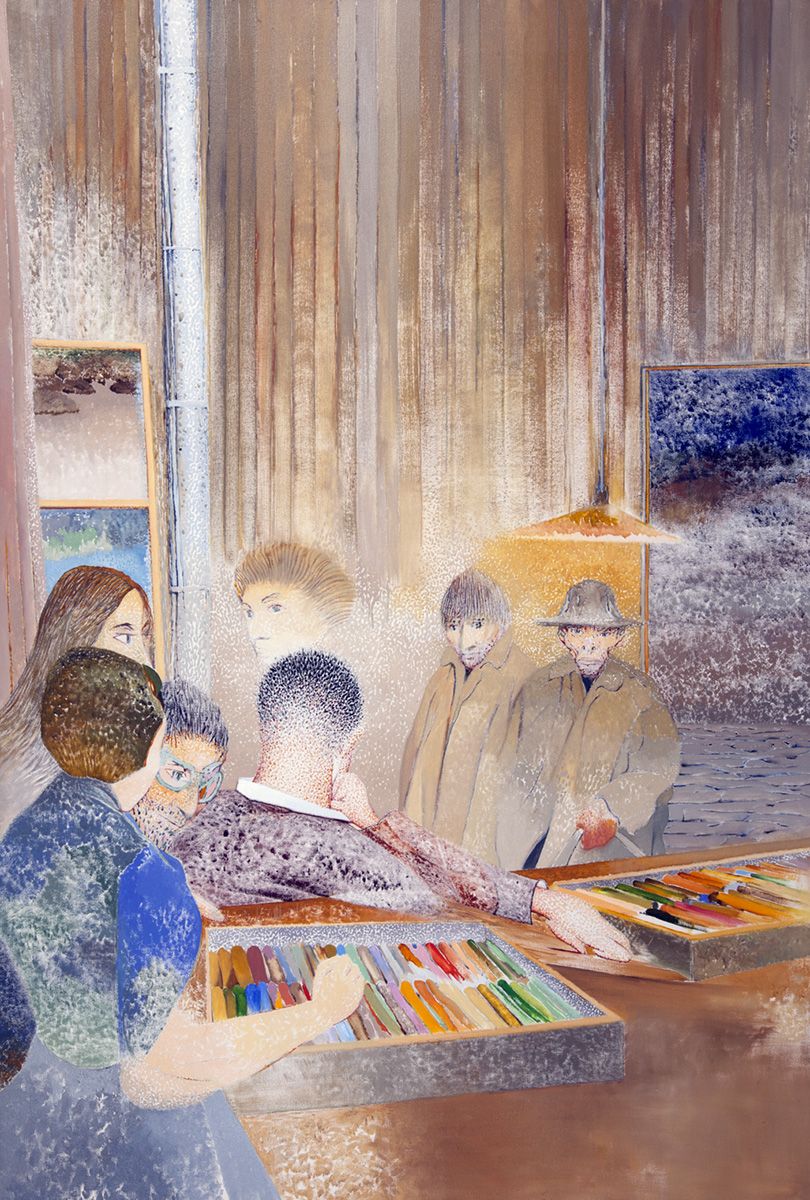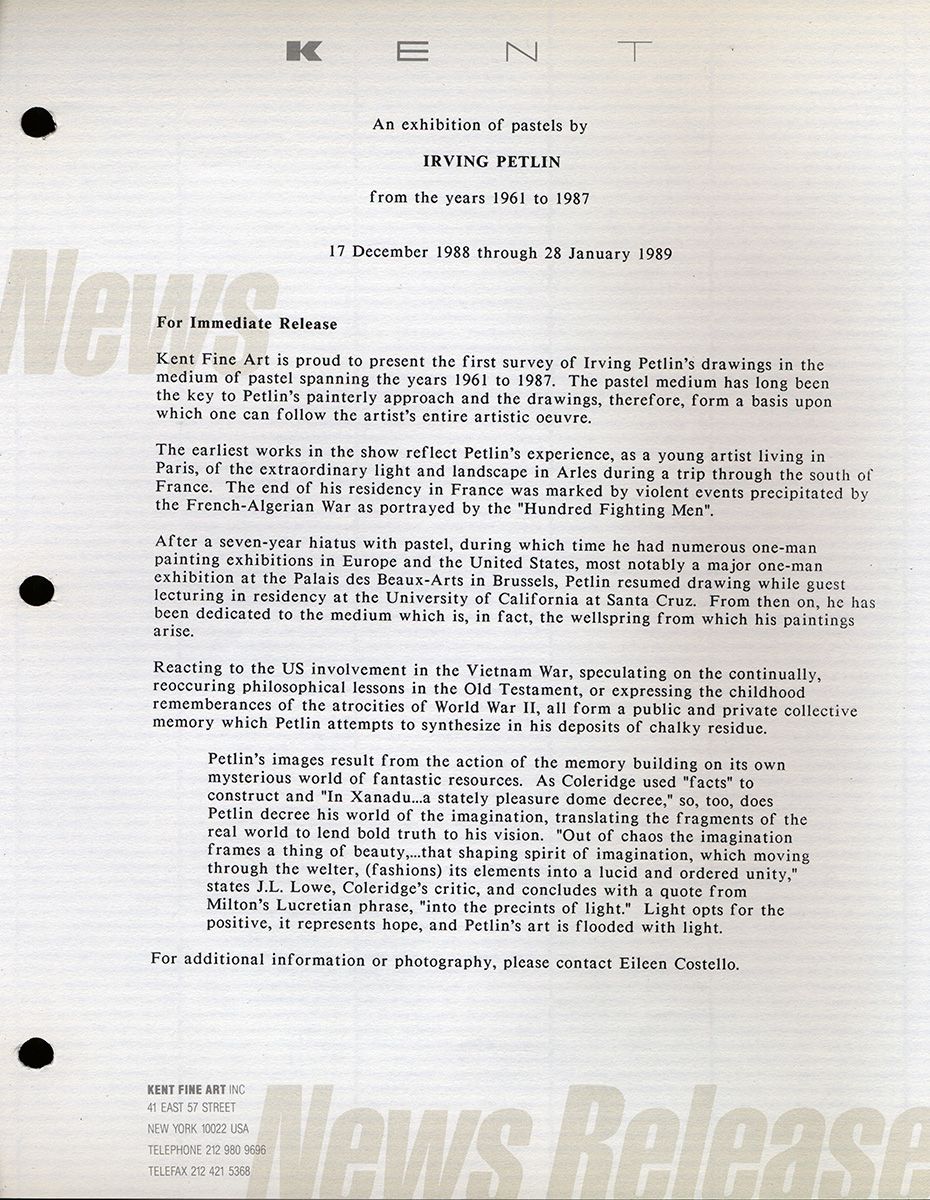Irving Petlin: Pastels
December 17, 1988 – January 28, 1989
Kent Fine Art is proud to present the first survey of Irving Petlin’s drawings in the medium of pastel spanning the years 1961 to 1987. The pastel medium has long been the key to Peltin’s painterly approach and the drawings, therefore, form a basis upon which one can follow the artist’s entire artistic oeuvre.
The earliest works in the show reflect Petlin’s experience, as a young artist living in Paris, of the extraordinary light and landscape in Arles during a trip through the south of France. The end of his residency in France was marked by violent event precipitated by the French-Algerian War as portrayed by the “Hundred Fighting Men”.
After a seven-year hiatus with pastel, during which he had numerous one-man painting exhibitions in Europe and the United States, most notably a major on-man exhibition at the Palais des Beaux-Arts in Brussels, Petlin resumed drawing while guest lecturing in residency at University of California at Santa Cruz. From then on, he has been dedicated to the medium which is, in fact, the wellspring from which his paintings arise.
Reacting to the US involvement in the Vietnam War, speculating on the continually, reoccurring philosophical lessons in the Old Testament, or expressing the childhood remembrances of the atrocities of World War II, all form a public and private collective memory which Petlin attempts to synthesize in his deposits of chalky residue.
Petlin’s images result from the action of the memory building its own mysterious world of fantastic resources. As Coleridge used “facts” to construct and “In Xanadu . . . a stately pleasure dome decree,” so, too, does Petlin decree his world of the imagination, translating the fragments of the real world to lend bold truth to his vision. “Out of chaos the imagination frames a thing of beauty. . . that shaping spirit of imagination, which moving through the welter, (fashions) its elements into a lucid and ordered unity,” states J.L. Lowe, Coleridge’s critic, and concludes with a quote from Milton’s Lucretian phrase, “into the precincts of light.” Light opts for the positive, it represents hope, and Petlin’s art is flooded with light.”


